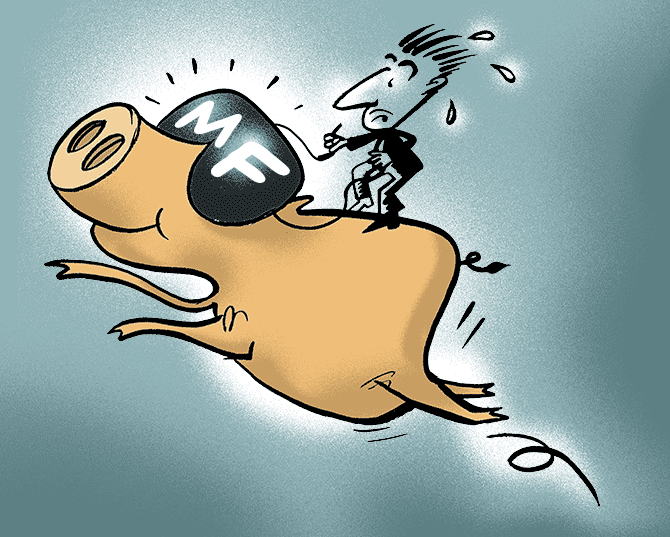 | « Back to article | Print this article |
After the Franklin Templeton episode, investor confidence has been shaken. Known brands have become more relevant to investors, as long as this psychological impact lasts.

Larger fund houses have seen an increase in their share of debt assets, with investors avoiding smaller-sized schemes amid fears of limited liquidity.
This follows Franklin Templeton’s move to wind up six of its schemes.
In April, the share of the top-five players expanded by 598 basis points to 60 per cent.
In the same month, Franklin Templeton Mutual Fund (MF) had announced winding up of six of its credit-oriented schemes amid heightened redemption pressures and lack of liquidity in debt markets.
The share of larger players increased, even as debt assets of the industry shrank 3.6 per cent in April.
“After the Franklin Templeton episode, investor confidence has been shaken. Known brands have become more relevant to investors, as long as this psychological impact lasts,” said Joydeep Sen, consultant at PhillipCapital.
In May, the share of larger players has increased further by 61.4 per cent.
“Investors are more concerned about safety. We have seen redemptions in credit-risk funds and other categories.
"As investors see some stability returning, they are re-deploying in fund houses, with better perception of safety,” said Amol Joshi, founder, PlanRupee Investment Services.
Redemptions have continued in categories such as credit-risk funds and medium-duration fund, which is another credit-oriented category.
In May, credit-risk schemes saw net outflows of Rs 5,173 crore, while medium-duration schemes saw net outflows of Rs 1,5120 crore.
Since the beginning of the year, the credit-risk category has lost 48 per cent of its asset base, standing at Rs 62,153 crore in May (average monthly assets).
Meanwhile, medium duration has lost one-third of its asset base in the same period, standing at Rs 20,566 crore in May.
Experts say institutional and corporate investors are also finding more comfort in larger-sized schemes.
Since the start of the year, the debt asset base for the industry has shrunk from Rs 12.6 trillion to Rs 11.5 trillion in May (average assets), translating into a dip of 13 per cent.
Experts say investors consider debt MFs over direct bond exposure, so that it is easier to exit and redeem investments.
“Investors come into MFs so that they can exit according to their cash-flow requirements.
"Except for triple A-rated papers, liquidity for lower-rated papers has been limited.
"Investors want to stick with larger-sized schemes, where liquidity is expected to be well-managed,” said Vikram Dalal, founder, Synergee Capital.
He added that investors are also considering fixed income alternatives, given the heightened volatility seen in equity schemes.
In year-to-date, the India VIX - a volatility gauge of the markets - has jumped as much as eight-fold, touching a high of 83.61 in March.
On Wednesday, the 50-share Nifty closed in the red, after gaining as much 0.9 per cent during the day’s trade.
Following Franklin Templeton’s announcement in April to wind-up its debt schemes, redemption pressures had escalated.
The MF industry had sought liquidity support from the Reserve Bank of India, to allay concerns of debt MF investors.